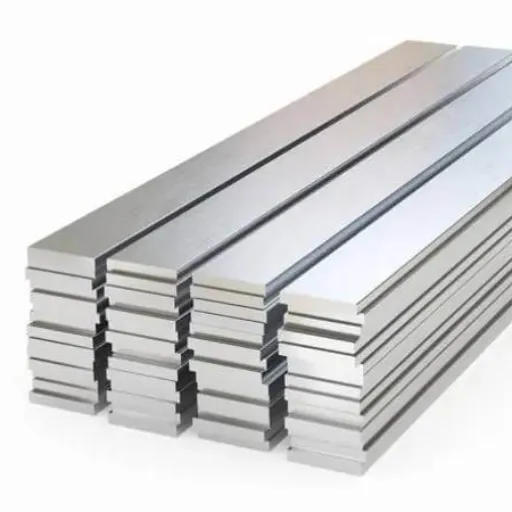Stainless steel is used in every industry due to various favorable attributes—mainly durability, corrosion resistance, and versatility. Of the many types available, 305 stainless steel is a prime choice for applications wherein increased formability is a necessity for quality output. Whether you manufacture kitchen appliances, automotive parts, or highly intricate industrial components, you must really understand the properties, benefits, and possibilities of procurement of grade 305 stainless steel with great detail. This blog will take an exhaustive dive into the distinguishing properties of 305 stainless steel and therefore present reasons as to why the majority of manufacturers select it and how to find reliable suppliers to ensure your project demands are executed in a timely manner.
Understanding Grade 305 Stainless Steel
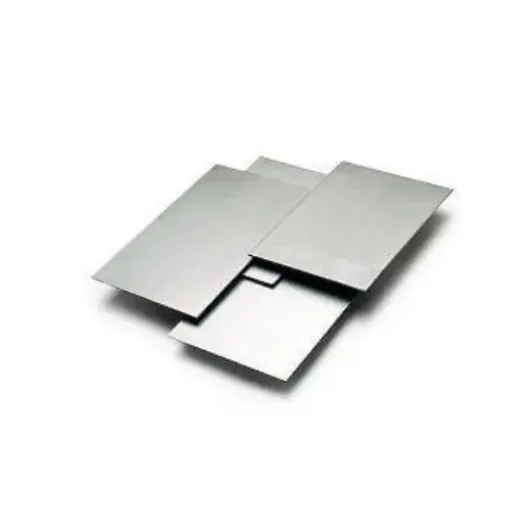
Grade 305 stainless steel is an austenitic alloy and finds more excellent corrosion and fabrication resistance, being that the nickel content is higher for this grade than other stainless steels. Hence, it finds its main application in those fields requiring extensive forming or welding processes such as in kitchen appliances or automotive applications. Whenever I procure these materials, I look for suppliers that have the ability to provide quality consistently, those that have all the industry-standard certifications, and those that can deliver the material within a stipulated time frame to enable efficient programming of projects in accordance with laid down specifications.
Definition and Composition of 305 Stainless Steel
Grade 305 stainless steel is an austenitic chromium-nickel alloy well known for its high resistance to corrosion and its formability under cold-working conditions. While it is classified under the 300 series of stainless steels, 305 is specifically designed to have a relatively low rate of work hardening as a result of an increased nickel content, which generally lies somewhere between 11 and 13%. Such an increased nickel content prevents its being magnetic during mechanical operations; that is, it inhibits magnetization of the surface during deep drawing or any other mechanical process, but it also makes the material more ductile and draws better where deep drawing or complex forming is involved.
Chemical Composition of AISI 305 Stainless Steel
| Element | Percentage Range |
|---|---|
| Chromium (Cr) | 17.0% to 19.0% |
| Nickel (Ni) | 11.0% to 13.0% |
| Carbon (C) | Max 0.12% |
| Manganese (Mn) | Max 2.0% |
| Silicon (Si) | Max 1.0% |
| Phosphorus (P) | Max 0.045% |
| Sulfur (S) | Max 0.03% |
It is this chemical makeup that gives 305 stainless steel its particular balance between corrosion resistance and mechanical pliability, which makes it suitable for applications demanding complicated forming without cracking or losing structural integrity. The major uses include kitchenware, automobile trim, and electronic components where both looks and functions matter. Being resistant to corrosive conditions guarantees its life span in both industrial and commercial applications.
Comparison with Other Stainless Steel Grades
Differences in pairs between stainless steel 305 and others, such as 304 and 316, emerge in the basic composition, mechanical properties, and applications.
Chemical Composition
Having a much higher nickel content (10–13%) compared with 304 steel (usually contains 8–10.5%), 305 enhances its ductility to allow extensive cold formation without any risk of cracking. While 316 stainless steel is one that contains a molybdenum content of about 2–3% along with usual chromium and nickel, to greatly enhance its resistance to chloride-induced corrosion, 305 contains no molybdenum; hence, it is an inferior choice in severe marine environments.
Corrosion Resistance
The corrosion resistance of 305 stainless steel is generally comparable to that of 304 because their chromium content is pretty much the same (usually about 18 to 20%). The addition of molybdenum in 316, however, greatly enhances its corrosion resistance against saline and acidic environments.
Mechanical Properties
The tensile strength and yield strength of 305 stand at a little low level if compared to 304 and 316, for it intends to stress maintaining better workability. For example, tensile strength of 304 is about 515 MPa and tensile strength of 316 is slightly more being at about 520 MPa, while tensile strength of 305 varies and is commonly close to 480 MPa. This tradeoff favors 305 where processes such as deep drawing and spinning involving complex shaping are paramount.
Key Insight: In choosing a stainless steel grade, one has to understand the subtle distinctions between 305, 304, and 316 since each set of properties has been tailor-made for particular environmental and functional conditions. The ultimate objective of proper material selection should be performance and longevity.
Important Features of 305 Stainless Steel
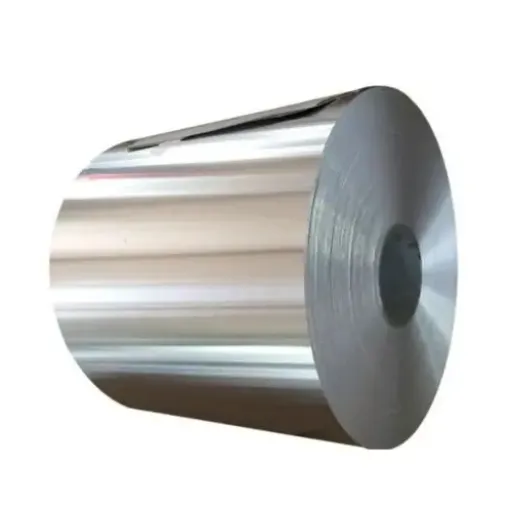
While choosing among stainless steels, 305 is the one that always has my attention for its good formability and resistance to corrosion in mildly corrosive environments. Its high percentage of nickel retards work hardening, hence allowing it to be very suited wherever complicated shapes need to be made or deep drawing has to be carried out. Better corrosion resistance or strength would balance the choice toward 304 or 316 for harsher conditions.
Mechanical Properties of 305 Stainless Steel
In situations where durability and flexibility are required, the 305 grade will show unique mechanical properties. These are known to have tensile strengths of usually 515 to 735 MPa (megapascals), handling enough load for structural and industrial applications. The yield strength is about 205 MPa, allowing it to sustain very high stresses without undergoing strain.
Key Mechanical Properties
- Tensile Strength: 515-735 MPa
- Yield Strength: Approximately 205 MPa
- Elongation: Close to 40% (excellent ductility)
- Brinell Hardness: Approximately 145 HB
- Modulus of Elasticity: 193 GPa
The elongation metrics that measure ductility rise to close to 40% in order to allow for extensive shaping or forming actions without cracking and failure. Also, surface wear can be moderately resisted by the 305 stainless steel, possessing a Brinell hardness of about 145 HB. Less wear means more malleability. The modulus of elasticity, which is at the order of 193 GPa, implies that the steel can rigidly hold its shape under external loads in applications requiring strict dimensional stability.
From this, the 305 grade stainless steel stands forth as a material in oven industries like food processing, chemical manufacturing, aerospace, where application versatility, corrosion resistance, and mechanical superiority matter. It becomes the duty of engineers and material specialists to consider these properties in conjunction with very specific design and operational requirements that support life-cycle efficiency and future performance.
Corrosion Resistance
Stainless steel of the grade 305 highly resists corrosion due to its greater chromium and nickel contents. These elements form a passive oxide film on the surface that forbids oxidation and lessens corrosion rate under various atmospheric conditions. It is best resistant to corrosive conditions of oxidation in atmospheric environment and mildly corrosive environment that involves food acids, dilute chemicals, and washing with pure water.
Corrosion Resistance Highlights
- Improved behavior on chloride exposure compared to standard austenitic grades like 304
- Better resistance to pitting corrosion with a PREN (Pitting Resistance Equivalent Number) between 19 and 21
- Capable of resisting intergranular corrosion when properly heat-treated or stabilized
- Excellent performance in marine environments and chemical-processing plants
According to recent studies, 305 SS shows an improved behavior on chloride exposure compared with standard austenitic grades such as 304. For example, it withstands pitting corrosion better, with a Pitting Resistance Equivalent Number (PREN) generally between 19 and 21. This ability is crucial in applications where frequent contact with chlorides and other corrosive agents is expected, such as in a marine environment or chemical-processing plants.
In addition, it is also shown to be capable of resisting intergranular corrosion, provided it is heat-treated or stabilized properly, which will ensure that its material integrity is maintained at high temperatures. In a hygienic industry such as pharmaceutical and food processing, 305 stainless steel’s corrosion resistance is paramount in meeting the standard and then keeping a quality product for a long service period.
Common Applications of Grade 305 Stainless Steel
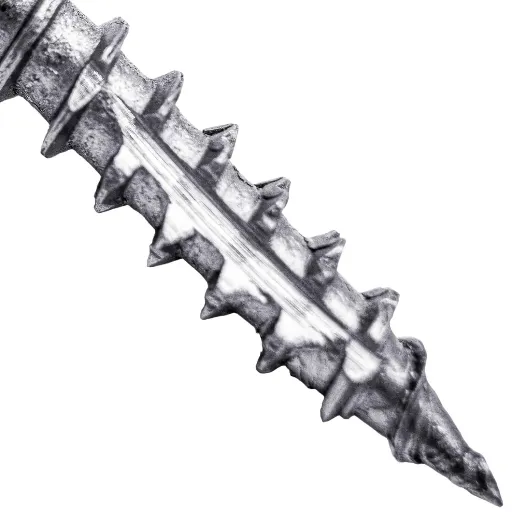
Grade 305 stainless steel is commonly found in applications that need good corrosion resistance and high resistance to wear, including kitchenware, chemical processing, and architectural components. Since it is non-magnetic and easily fabricated, it offers mileage to the manufacturing of delicate and cleanroom components.
Household Products
Grade 305 stainless steel finds its use in household products due to its corrosion resistance and good formability. The high nickel content enables it to withstand exposure to water and a mild concentration of acids and household cleaning chemicals, making it particularly suitable for kitchenware, appliances, and fixtures.
Applications in Kitchenware
Grade 305 stainless steel is used in cutlery, pots, and pans because it is durable and provides a non-reactive surface. This grade resists surface pitting when exposed to saltwater or acidic foods such as tomatoes and citrus at the laboratory level, hence the finest cookware brands choose this alloy.
Appliances and Fixtures
Major Appliances
- Dishwashers
- Refrigerators
- Washing machines
Plumbing Fixtures
- Faucets
- Sinks
- Shower components
The construction of dishwashers, refrigerators, and washing machines makes use of Grade 305 stainless steel. Reports show more than 40% of modern kitchen appliances use stainless steel components for their rust-proof and hygienic properties. Faucets and sinks made from this alloy have substantially fewer failures attributed to tensile strength and corrosion resistance.
Market Demand and Sustainability
Recent analysis done by different organizations shows global demand for the use of stainless steel in household products because it is recyclable. More than 90% of stainless steel is recycled after being used by the consumer, which goes in favor of sustainability goals. The very long life of Grade 305 means fewer replacements and lower long-term costs for the household.
Widespread usage of Grade 305 in household applications continues to create expectations among consumers regarding quality, durability, and performance, further strengthening its position as a material of choice in modern homes.
Medical Equipment
Grade 305 stainless steel is a key function in the manufacture of medical equipment, giving it some corrosion resistance, high strength, and sterilizability. It is used where hygiene and precision are key considerations because of its non-reactive qualities. They find common use in surgical instruments, implantable devices, and medical-grade containers. Approximately 60% of reusable surgical instruments worldwide are being manufactured using austenitic stainless steels, such as Grade 305, as reported in recent studies.
Medical Applications
- Surgical instruments
- Implantable devices
- Medical-grade containers
- Sterilization equipment
- Dental instruments
- Laboratory equipment
The material also resists repeated cycles of cleaning in conditions of high temperature and exposure to aggressive disinfectants, thereby guaranteeing the lifetime and reliability in tough environments. In parallel, as new medical technologies arise, the demand for durable materials that can be used in vivo such as Grade 305 increases. Forecasting projects the worldwide surgical instrument market to achieve $28.9 billion by 2031, insinuating the importance that stainless steel possesses in this industrial field. This dependence also assures that not only Grade 305 but also other grades play a fairly important role in today’s healthcare system, guaranteeing the highest standards of performance and safety for medical equipment.
Benefits of Choosing 305 Stainless Steel
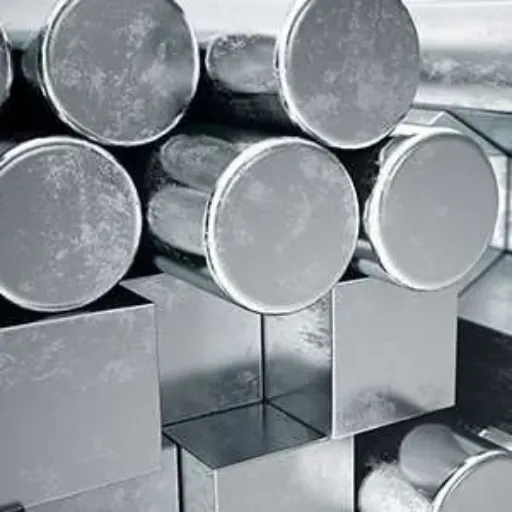
Considering 305 stainless steel, I particularly emphasize its exceptional corrosion resistance, long durability, and ease of working. These make it the most suitable option for applications where fine precision, reliability, and longevity in tough working environments are paramount, such as healthcare and manufacturing.
Advantages Over Other Stainless Steel Grades
Grade 305 stainless steel brings a unique combination of properties, presenting its advantages for numerous applications. One advantage is that it exhibits an excellent corrosion resistance, equally or even better so than many of the lower alloyed grades such as 304, especially when exposed to certain atmospheres like high humidity or mild chemical attacks. Grade 305 should, therefore, be used for medical instruments, food processing equipment, and consumer electronics.
Non-Magnetic Properties
Grade 304 may become slightly magnetic after cold working, whereas Grade 305 remains non-magnetic in the same treatments. This property is vital where the magnetic fields would interfere with performance, like in assemblies of sensitive electronics and some aerospace applications.
Superior Formability
Because its nickel content is higher (about 11-13%) than that of 304 (8-10.5%), it improves ductility and softens the material to allow more complicated forming and manufacturing processes. This property benefits manufacturing processes for deep drawing and complex geometries.
Market Growth and Industry Standards
Recent market data confirm further the ascendancy of 305 stainless steel grade. The studies have found that industries requiring high durability and biocompatibility are increasingly opting for this grade in applications like surgical instruments and dental instruments. For instance, the medical material market is forecast to grow with a CAGR of 8.5% by 2030, further supported by the stainless steel alloys dominated by Grade 305.
Its capacity to meet both FDA and ISO stringent requirements compounds its worthfulness in high-performance medical-grade equipment.
Finally, the selection of Grade 305 in preference for other grades utilizes the best qualities it possesses: higher corrosion resistance, consistent non-magnetism, better formability, and higher adherence to stringent standards of the industry, thus ensuring dependable use in critical industrial and healthcare applications. Unfortunately, it’s these very qualities that set its paradigm firmly as a material of choice in most modern engineering and manufacturing fields.
Cost-Effectiveness
In terms of cost-effective return on investment, one should take into consideration the way unusual properties of Grade 305 contribute towards the economic benefits in the long run. Although Grade 305 may come with a slightly higher price tag compared to other steel grades at the point of purchase, the high corrosion resistance characteristic, by far, lowers the costs of maintenance and replacement throughout its lifetime use. For example, industries situated in saline and high-moisture surroundings, such as marine or food processing industries, profit from the ability Grade 305 has to retain structural integrity without the need for repairs almost on a regular basis; this would of course have been an excellent return on investment.
Long-Term Economic Benefits
- Reduced Maintenance Costs: High corrosion resistance minimizes regular repairs
- Extended Service Life: Longer replacement cycles reduce overall expenses
- Price Stability: Well-balanced alloy composition ensures steady pricing
- Production Efficiency: Reduced equipment downtime and working time loss
Furthermore, the global price trends for stainless steel throughout 2023 have somewhat given Grade 305 an added advantage due to the careful alloy balance. Chromium and nickel being the components granting it with certain advantages are well balanced, hence ensuring a steady price as compared to the grades with more erratic raw material absorptions. A more thorough life cycle assessment would prove to be more cost-efficient, taking away from the risk of mechanical failure of equipment and working time loss; therefore, its wider use improves the level of production.
Accordingly, the use of Grade 305 stainless steel will go hand in hand with an economic goal while sharing with performance. This marks it as the preferred option for industries where reliability is paramount and where there is precision in engineering standards. Henceforth, the very factors bring about its eminence both as a solution with high performance while also being a guarantee of financial prudence in the face of modern engineering challenges.
Reference Sources
-
AZoM – Stainless Steel Grade 305 (UNS S30500)
This source offers comprehensive details on the mechanical properties, tensile strength, and modulus of elasticity of Grade 305 stainless steel.
Read more here -
Rolled Metal Products – Stainless Steel Type 305
This page highlights the unique characteristics of Grade 305, such as its low work hardening rate and suitability for deep drawing applications.
Explore the details here -
Elgiloy – Alloy 305 Stainless Steel Datasheet
This datasheet provides insights into the corrosion resistance, oxidation resistance, and other key properties of Grade 305 stainless steel.
Access the datasheet here
Frequently Asked Questions (FAQs)
What is 305 stainless steel and how is it compared to 18-8 stainless steel?
Being an austenitic chromium-nickel stainless steel primarily consisting of iron, chromium, and nickel, 305 stainless steel or 305 ss finds a close comparison with that of 18-8 stainless steel, which stands for a group of austenitic stainless steels generally produced from about 18% chromium and 8% nickel. Among these unique characteristics of 305 is the ability to be well-formed and the very good corrosion and oxidation resistance, mainly when faced with high-temperature applications.
What about the corrosion and resistance properties of 305 and AISI 304 stainless steels?
Both 305 and AISI 304 stainless steels are corrosion-resistant because of their high nickel content, which grants them the ability to withstand corrosive environments of all kinds. While 305 is highly workable, AISI 304 is also corrosion-resistant but finds far more applications. In most cases, the choice between the two will be based on the particular needs of a project.
Can you expound on the composition of AISI 305 and why it matters?
The AISI 305 contains about 18% chromium, 9% nickel, and trace amounts of other elements. This composition makes the steel sufficiently durable and corrosion-resistant, in turn paving the way for its wide application. High levels of nickel also make the steel nonmagnetic, which may be an advantage in some industrial applications.
What are common uses of 305 stainless steel?
With 305 stainless steel being quite formable and corrosion-resistant, its applications are wide-ranging. Common uses include kitchen equipment, food processing equipment, and architectural components. Its ability to be bent extensively or welded makes it the preferred material for projects that involve custom manipulation.
How does 305 stainless steel’s work hardening rate affect its processing?
The work hardening rate of 305 stainless steel is fairly high; hence, its strength increases very rapidly when being deformed. This is quite advantageous for grinding or polishing since it makes it easier to achieve the desired properties in the final product. However, care should be exercised during forming operations so that the material does not become too hard for subsequent processing.
What about oxidation resistance in 305 stainless steel?
With regard to oxidation resistance, 305 stainless steel is very good and can maintain its integrity in gaseous atmospheres at high-temperature stages higher than 899°C. It is thus suitable for applications involving heat and oxidizing environments such as those found in chemical manipulation and high-temperature furnaces.
Conclusion
Grade 305 stainless steel stands out as an exceptional choice for applications requiring superior formability, corrosion resistance, and non-magnetic properties. Its unique composition and characteristics make it invaluable across industries from medical equipment to household applications, offering both performance excellence and cost-effective solutions for modern engineering challenges.

